 On March 3, 2017 a rickety Shasta trailer with rotting walls rolled onto SMU’s campus. The doors were duct taped shut to hold it together. The once white siding had turned yellow after years of weathering. The two-toned orange striping on the side gave away the trailer’s mid-1980s birthday.
On March 3, 2017 a rickety Shasta trailer with rotting walls rolled onto SMU’s campus. The doors were duct taped shut to hold it together. The once white siding had turned yellow after years of weathering. The two-toned orange striping on the side gave away the trailer’s mid-1980s birthday.
In tiny white lettering painted over an orange stripe, the Shasta greeted the Hunt Institute team with the message, “Friendship 16.”
The team called in a professional, The Trailer Guy, to redo the trailer. Alejandro Dominguez Garcia, a student analyst at the Hunt Institute, said that he was glad the little Shasta was in such bad shape. “It allowed us to start from scratch and completely make it our own.”
After the trailer was fixed up, it was time for the real work to begin.
Research: Phase I, or Why did the Hunt Institute buy an old trailer in the first place?
The Hunt Institute was founded to combat the effects of poverty through the intersection of innovative research and practical application. Around the world, people are confronted with a lack of clean and plentiful water, an absence of nutrient rich soil, problems associated with extreme climates, and inadequate space. For many, this translates to food insecurity. Finding a solution that combats these constraints on agriculture in urban areas became a top priority for the Hunt Institute.
This problem is not exclusive to places on the other side of the world. In fact, food insecurity is all around us. Half of South Dallas is considered a food desert, according to a 2011 study by the US Department of Agriculture. A food desert is an area that lacks access to fresh fruits and vegetables. Most of the South Dallas area relies on convenience stores and fast food restaurants for meals because large, well-stocked grocery stores are not readily accessible by public transportation.
“Food insecurity is a crippling experience that families face every day,” said Dr. Eva Csaky, Director of the Hunt Institute. “Even in American cities, some communities have limited or no access to healthy food options, which can lead to health and social consequences down the line.”
The need for mobile, low-cost, automated agriculture was apparent. The solution: a mobile greenhouse named Evie.

Why mobile? Most people around the world do not own their own homes. When people move, for whatever reason, they should not have to leave their food source behind. Why low cost? Imagine that people around the world, regardless of their economic limitations, had the option to invest in a mobile greenhouse. People could supplement their diets with fresh fruits and vegetables, or supplement their income by selling produce. Why automated? Agriculture is an investment that requires time and specific training. Not everyone has the technical ability to monitor and adjust growing conditions. An automated system sets everyone up for success, regardless of background knowledge.
So, why did the Hunt Institute buy an old trailer in the first place? Sustainability. The old Shasta trailer could be retrofitted to serve as the prototype of the mobile greenhouse. When something old has the potential to be repurposed, there is no need to build something new. The Hunt Institute was able to save precious resources through this major recycling effort. On a global scale, people are more likely to have access to an old trailer than a new building. With a lot of elbow grease, any trailer can become an optimized growing space.
The idea of a “Greenhouse for Good,” a mobile, low-cost, automated agricultural space, guided the Hunt Institute team as they began the initial research.
What’s in a Name?
 As different ideas for turning an old trailer into a mobile greenhouse floated around the Hunt Institute, one major problem remained. What should the project title be? Initially, people tried to name the project something related to SMU, but names like Peruna and Pony Up didn’t make the cut. Finally, someone suggested Evie. And it stuck. Alissa Llort, part of the Hunt Institute’s External Affairs team, shared that Evie was derived from the name Eve. The name Eve is associated with life and beginnings and, as Llort added, “greenhouses go along with that message.”
As different ideas for turning an old trailer into a mobile greenhouse floated around the Hunt Institute, one major problem remained. What should the project title be? Initially, people tried to name the project something related to SMU, but names like Peruna and Pony Up didn’t make the cut. Finally, someone suggested Evie. And it stuck. Alissa Llort, part of the Hunt Institute’s External Affairs team, shared that Evie was derived from the name Eve. The name Eve is associated with life and beginnings and, as Llort added, “greenhouses go along with that message.”
The motto for the Evie campaign was also important for conveying the meaning behind the mobile greenhouse. The team settled on, “Plant where you are, grow where you go.”
Unveiling
On April 20, 2017, the Hunt Institute was ready to unveil Evie at Earth Day Texas. Kids, parents and Big Tex took turns admiring the red and white trailer. Even though Evie wasn’t named after SMU, there was a large mustang painted on the back. The red bottom half of the trailer and white roof were interrupted by a blue stripe in the middle. This trailer was unmistakably the product of Southern Methodist University’s modern, interdisciplinary, world-changing students.
Throughout the day, kids were able to plant seeds and learn about agriculture. Evie: Phase I was about creating the mobile greenhouse. Once the greenhouse was created, Evie could take some time to focus on education.
While reflecting on unveiling Evie, team lead Adrienn Santa said, “It is important to educate people, encourage them to grow their own vegetables and fruits, and to eat healthy food every day.”
Research: Phase II
In elementary school, most kids learn that living things need food, water and shelter to survive. For plants, that translates to soil, water and sunlight. A mobile greenhouse presents some serious problems when it comes to meeting those needs. Shasta trailers were not designed to facilitate irrigation, allow for direct sunlight, and certainly don’t come fully stocked with nutrient-rich soil. Student Fellows at the Hunt Institute had to research innovative solutions to compensate for the resources taken away by the ease of mobility.
Evie: Phase II is focused on the optimization of growing. How can Evie consistently and reliably use water? How will Evie manage heat waves and cold snaps? SMU students and Hunt Institute Fellows have been busy trying to answer those questions.
 3Dponics is an open-source initiative that combines aeroponics and 3D printing. Aeroponics uses precise irrigation in a way that allows plants to grow without soil. This makes it possible for plants to grow in areas without good soil due to environmental conditions, urbanization or natural disasters. 3D printing using the Fused Depositions Modeling 3D Printers helps reduce the cost of complex aeroponic systems, making gardening more accessible to disadvantaged communities. Alejandro Dominguez Garcia and Alec Maulding are working on research and development for this portion of Evie: Phase II.
3Dponics is an open-source initiative that combines aeroponics and 3D printing. Aeroponics uses precise irrigation in a way that allows plants to grow without soil. This makes it possible for plants to grow in areas without good soil due to environmental conditions, urbanization or natural disasters. 3D printing using the Fused Depositions Modeling 3D Printers helps reduce the cost of complex aeroponic systems, making gardening more accessible to disadvantaged communities. Alejandro Dominguez Garcia and Alec Maulding are working on research and development for this portion of Evie: Phase II.

Heating and cooling was a major concern when developing Evie: Phase I and researching Evie: Phase II. Adrienn Santa analyzed solar power, heat absorption, and the refrigeration cycle of the mobile greenhouse. The goal of this research was to find a sustainable solution for cooling small greenhouses.
Evie Today
Mark your calendars for April 20, 2018. Evie will be back on exhibit at EarthX 2018 and you can have the first look at the new improvements to the solutions lab. Evie still has teaching to do and lives to touch. Phase II of research and development is underway, but isn’t done yet. With Evie Phases II and III, we hope to get even closer to the bigger dream of combating the effects of poverty through innovation and compassion. We invite you to become a part of Evie’s story. Please click here to get involved.
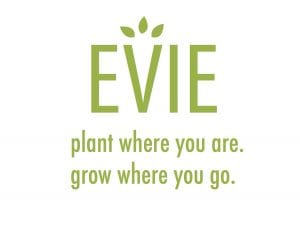
Story Contributors
Written by: Anna Grace Carey
Edited by: Maggie Inhofe
Photos by: Alissa Llort, Laura O. Graham and Corrie Harris
Graphic designs by: Alissa Llort





To read more about the Hunt Institute’s work to develop future-focused solutions to some of the world’s biggest problems, please click here. For the latest news on the Hunt Institute, follow our social media accounts on LinkedIn, Facebook, and Instagram. We invite you to listen to our Podcast called Sages & Seekers. If you are considering engaging with the institute, you can donate, or sign-up for our newsletter by emailing huntinstitute@smu.edu.




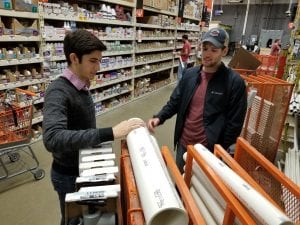
 Break Bread, Break Borders (BBBB) is a catering company with a twist. BBBB hires women who came to Dallas as refugees and equips them with the tools to thrive in a new country. Not only does BBBB help build a necessary sense of community among women who have lost nearly everything in their home countries, but BBBB also facilitates a discussion about immigration in the United States.
Break Bread, Break Borders (BBBB) is a catering company with a twist. BBBB hires women who came to Dallas as refugees and equips them with the tools to thrive in a new country. Not only does BBBB help build a necessary sense of community among women who have lost nearly everything in their home countries, but BBBB also facilitates a discussion about immigration in the United States.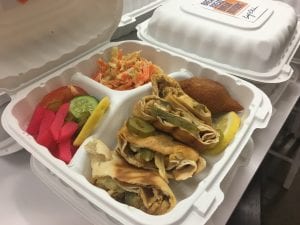




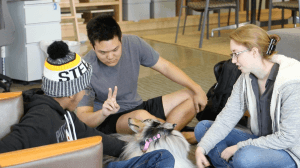

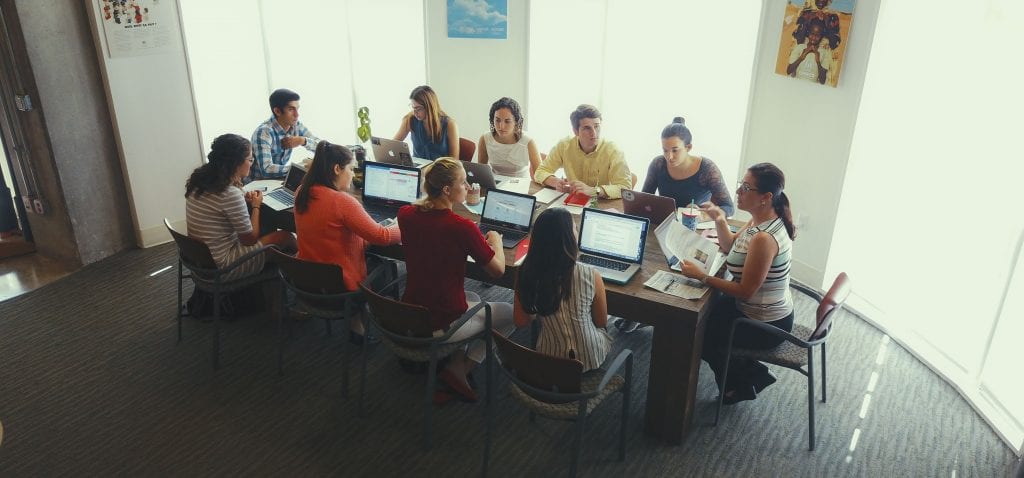
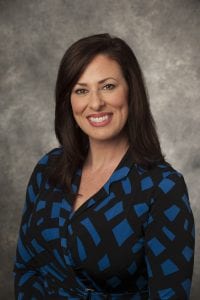
 Silvia Rivera is the definition of a world changer. Since joining the Hunt Institute for Engineering and Humanity as a student analyst, Rivera has conducted research on artisan entrepreneurship and inclusive economic development. Rivera recently returned from Washington, D.C. after participating in “The Creative Economy Matters,” a conference hosted by the
Silvia Rivera is the definition of a world changer. Since joining the Hunt Institute for Engineering and Humanity as a student analyst, Rivera has conducted research on artisan entrepreneurship and inclusive economic development. Rivera recently returned from Washington, D.C. after participating in “The Creative Economy Matters,” a conference hosted by the 


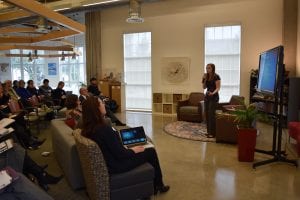

 On March 3, 2017 a rickety Shasta trailer with rotting walls rolled onto SMU’s campus. The doors were duct taped shut to hold it together. The once white siding had turned yellow after years of weathering. The two-toned orange striping on the side gave away the trailer’s mid-1980s birthday.
On March 3, 2017 a rickety Shasta trailer with rotting walls rolled onto SMU’s campus. The doors were duct taped shut to hold it together. The once white siding had turned yellow after years of weathering. The two-toned orange striping on the side gave away the trailer’s mid-1980s birthday.
 As different ideas for turning an old trailer into a mobile greenhouse floated around the Hunt Institute, one major problem remained. What should the project title be? Initially, people tried to name the project something related to SMU, but names like Peruna and Pony Up didn’t make the cut. Finally, someone suggested Evie. And it stuck.
As different ideas for turning an old trailer into a mobile greenhouse floated around the Hunt Institute, one major problem remained. What should the project title be? Initially, people tried to name the project something related to SMU, but names like Peruna and Pony Up didn’t make the cut. Finally, someone suggested Evie. And it stuck.  3Dponics is an open-source initiative that combines aeroponics and 3D printing. Aeroponics uses precise irrigation in a way that allows plants to grow without soil. This makes it possible for plants to grow in areas without good soil due to environmental conditions, urbanization or natural disasters. 3D printing using the Fused Depositions Modeling 3D Printers helps reduce the cost of complex aeroponic systems, making gardening more accessible to disadvantaged communities. Alejandro Dominguez Garcia and Alec Maulding are working on research and development for this portion of Evie: Phase II.
3Dponics is an open-source initiative that combines aeroponics and 3D printing. Aeroponics uses precise irrigation in a way that allows plants to grow without soil. This makes it possible for plants to grow in areas without good soil due to environmental conditions, urbanization or natural disasters. 3D printing using the Fused Depositions Modeling 3D Printers helps reduce the cost of complex aeroponic systems, making gardening more accessible to disadvantaged communities. Alejandro Dominguez Garcia and Alec Maulding are working on research and development for this portion of Evie: Phase II.





